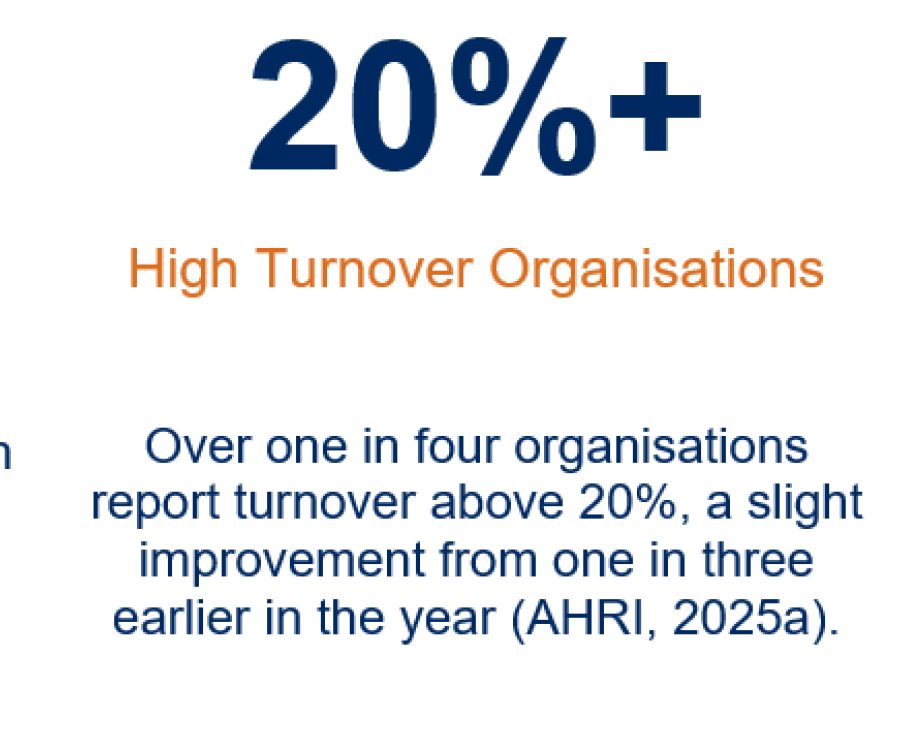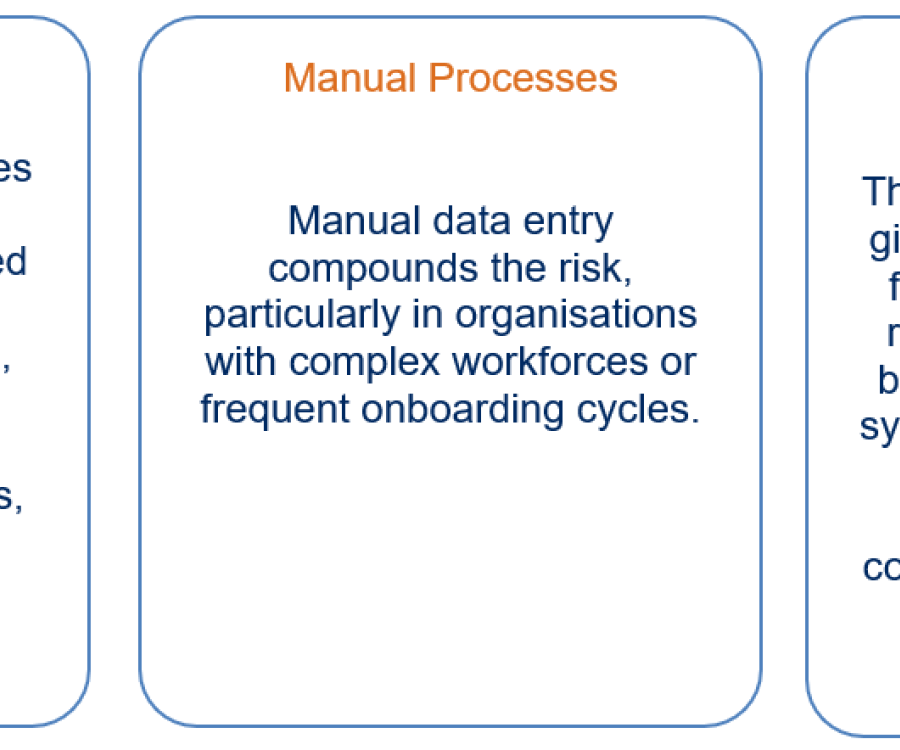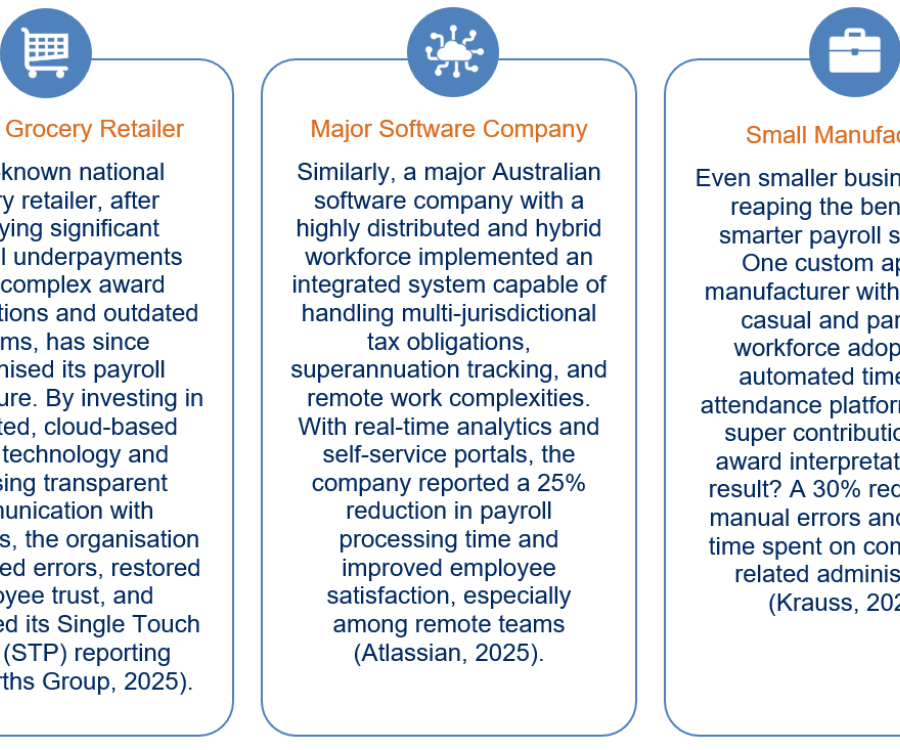Why Getting Payroll Right in 2025 is Non-Negotiable
Australian organisations are operating in an environment of constant change, where workforce expectations, regulatory demands, and operational pressures are colliding. In this high-stakes landscape, one question quietly underpins the employee-employer relationship: are you getting payroll right?
In 2025, the implications of payroll accuracy are more significant than ever. Far from being a routine back-office task, payroll accuracy has become a strategic lever that shapes employee satisfaction, brand reputation, and business resilience.
The High Stakes of Payroll Accuracy
Payroll isn’t just about making sure people are paid on time. It is a very significant function that represents trust, fairness, and professionalism. When payroll is done correctly, it reinforces confidence and stability. When it is wrong, it damages morale, invites regulatory scrutiny, and tarnishes employer brand.

In this environment, employees are more attuned to how they are treated, and payroll accuracy is a critical indicator. Pay errors send a powerful message: that attention to detail, fairness, or employee wellbeing isn’t a priority.
The Financial and Reputational Cost of Payroll Errors
The cost of getting payroll wrong is not merely administrative, it can be significant and cascading. Financially, underpayments can trigger compliance actions, backpay obligations, and penalties. In 2024–25, Fair Work’s increased enforcement capacity has already resulted in multiple high-profile audits, with civil penalties for serious contraventions reaching up to $939,000 per breach for corporate entities (Fair Work Ombudsman, 2025).
Reputation is just as vulnerable. In a tight labour market, unemployment remains at a low 4.1%, and underemployment sits at 5.9% as of Q1 2025 (Australian Bureau of Statistics, 2025). Businesses cannot afford to lose trust or talent due to preventable payroll mistakes.
Add to that the cost of staff churn. The average cost to replace an employee now exceeds 50% of their annual salary, accounting for recruitment, training, and lost productivity (HR Industry Benchmarking Report, 2025). A payroll error may seem minor, but if it prompts even a handful of high performers to leave, the financial impact is immediate and lasting.
Root Causes: Why Payroll Errors Still Happen
Despite advances in technology and compliance awareness, payroll mistakes remain stubbornly common. They are rarely the result of a single oversight. More often, they reflect systemic weaknesses, outdated platforms, disjointed processes, and a lack of integration between HR, payroll, and finance functions.

Payroll and Employee Engagement: A Direct Line
While often overlooked, payroll plays a pivotal role in the employee experience. Research shows that delays in pay, unexplained deductions, or incorrect super contributions are among the top triggers of dissatisfaction, especially for younger or contract-based workers, who are less tolerant of administrative lapses (YouthInsight, 2025).
While broader issues such as career progression and poor management continue to drive turnover, an error in someone's pay packet can serve as the tipping point for resignation. And in a market where 61% of workers are already considering their next move, the margin for error has all but disappeared (Perkbox, 2025).
On the flip side, businesses that consistently deliver accurate, timely, and transparent payroll, build a culture of trust. This reliability becomes a quiet but powerful retention tool, reinforcing professionalism and care.
Beyond the Payslip: The Expanding Role of Payroll
Modern employees expect more than just a deposit into their bank account. They want visibility, control, and simplicity in how they manage their work and financial data.
Self-Service Access
Progressive payroll systems are responding to these expectations by offering intuitive self-service portals, mobile accessibility, and on-demand pay options.
Real-Time Information
These features give staff real-time access to payslips, tax summaries, leave balances, and more, without the friction of traditional administration.
Wellbeing Integration
Importantly, payroll now underpins broader wellbeing and reward strategies. From managing salary packaging and bonuses to administering novated leases or allowances, accurate and timely payroll is integral to the delivery of holistic employee benefits (Willis Towers Watson, 2025).
Five Practical Strategies to Improve Payroll Accuracy
Given the stakes, forward-thinking organisations are taking deliberate steps to ensure payroll accuracy becomes a business strength, not a liability.
Invest in Integrated, Automated Payroll Systems: Automation significantly reduces the potential for human error. Integrated platforms bring HR, payroll, and finance data together, enabling real-time reporting and ensuring consistency across functions.
Conduct Frequent Audits and Compliance Reviews: Regular internal audits identify issues early, before they become compliance breaches. Staying across changes in superannuation law, minimum wage rulings, and underpayment legislation is essential to avoid penalties.
Upskill Payroll Professionals and Break Down Silos: Today’s payroll teams must be proficient in data analytics, legislation, and systems thinking. Ongoing professional development and cross-functional collaboration are key to effective payroll governance.
Enhance Communication and Self-Service Access: Employees should be empowered to manage their personal and payroll information, supported by clear communications about pay cycles, deductions, and benefits. Transparency builds confidence.
Foster a Culture of Accuracy and Continuous Improvement: Organisations that view payroll as a strategic asset, not just an operational task, are more likely to invest in smarter processes, better technology, and proactive risk management.
What Australian Businesses Are Doing Right
There are encouraging signs across the Australian market that payroll challenges, no matter how complex, can be effectively addressed with the right strategy and tools.

These examples show that whether you are managing thousands of employees or a rotating crew of ten, payroll accuracy is achievable, and increasingly, essential.
The Cost of Standing Still
The risks of failing to modernise payroll are escalating. The Fair Work Legislation Amendment (Closing Loopholes No. 2) Bill, passed earlier this year, has intensified scrutiny around wage theft, underpayments, and record-keeping obligations (Commonwealth of Australia, 2025).
Meanwhile, public trust in employers is fragile. Social media has made it easy for staff to broadcast poor experiences. A single negative post about a missed payment or unexplained deduction can ripple far beyond one payslip, and straight into the court of public opinion.
For businesses still relying on outdated systems or manual workarounds, the message is clear: inaction is risk.
Looking Ahead: Payroll as a Strategic Priority
In the Australian business landscape of 2025, payroll is no longer a background function. It is a frontline enabler of business success.
Organisations that prioritise accuracy, not just compliance, will be better placed to attract and retain talent, build resilience, and unlock efficiency. The path forward isn’t simply technological, it’s cultural. It requires leaders to elevate payroll as a core pillar of operational excellence and employee experience.
By getting payroll right, businesses do more than pay people. They earn trust, protect reputation, and strengthen their competitive position in a tight market.

